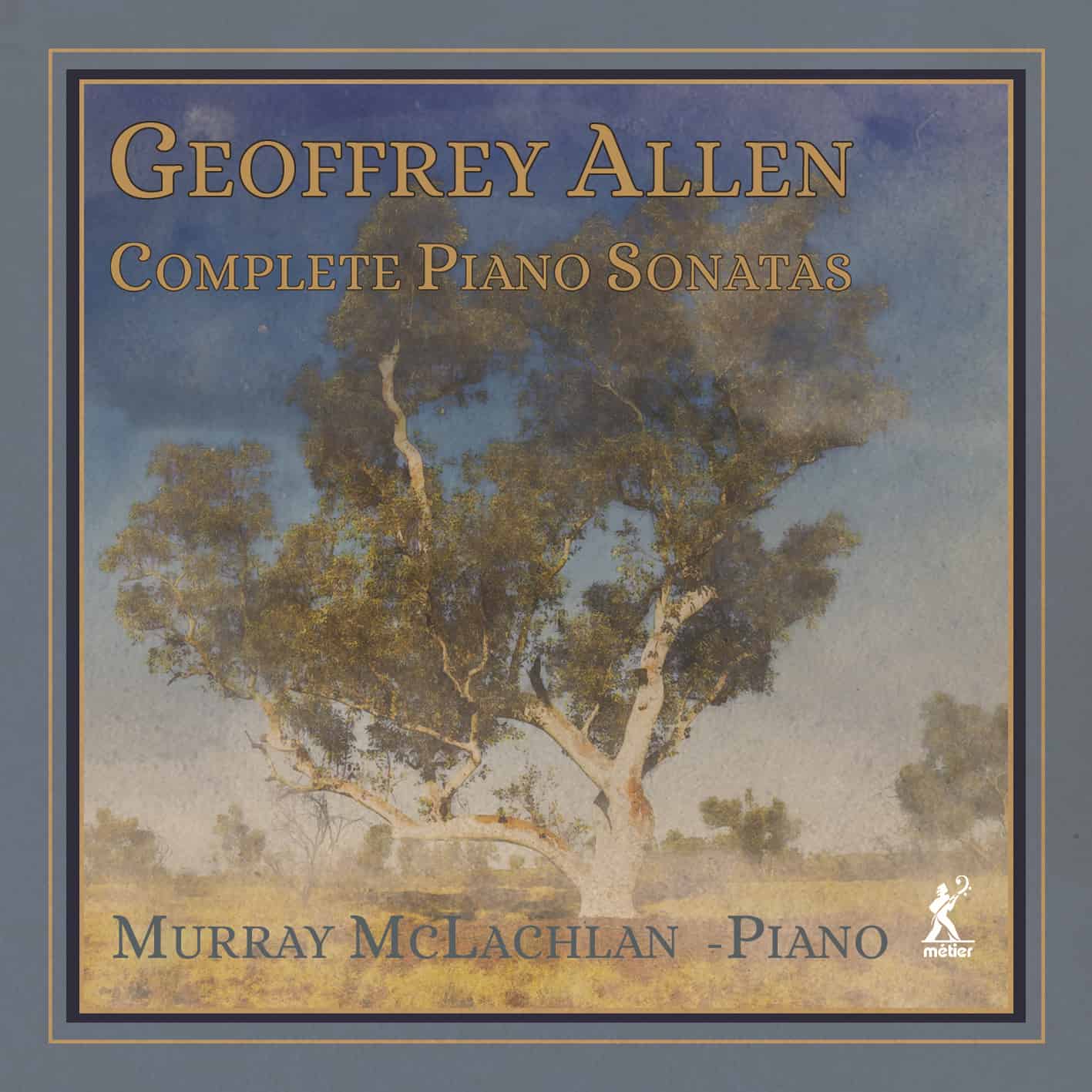Fanfare
Geoffrey Allen (1927–2021) was born in Essex, England and emigrated to Australia in 1952, where he settled for the rest of his life. He helped to create the Recording Society of Australia, devoting considerable effort to publishing and recording music by a great many Australian composers. Although he composed throughout his life, it was only since the late 1980s that Allen’s output turned prolific. The First Piano Sonata was composed in 1959, but it was so significantly revised in 1995 that it has two opus numbers, op. 5 and 24. The remaining 16 piano sonatas were composed between 1989 and 2019, the year Allen turned 92.
The following description of his compositional style is given on his website: “In his instrumental music Allen favored Delius’s principle of ongoing rhapsodic development, instinctively applied. Motives and entire passages are often repeated, but frequently transposed by a semitone or tone, a habit which Allen thought may be derived from Milhaud. The tonality is evasive and constantly shifting, resisting classification into a key for the most part.”
If I encountered any one of these sonatas on a recital program, I would be pleased. Allen’s music is free-form tonal, in the ambiguous way favored by Delius, seasoned by passing dissonance. In addition to Delius, Allen identified Walton, Vaughan Williams, Debussy, Prokofiev, and Scriabin as influences (there are a few others as well, but this list gives you a sense of the flavors to expect). While one notices the strands of influence, Allen’s piano music doesn’t sound specifically like any of those composers. He mixes traditional harmonies and unstable ones in a way that gives the music some degree of unpredictability.
Pianist Murray McLachlan’s excellent program notes focus on “Allen’s ever-shifting harmonic soundscapes,” and the element of surprise is a key ingredient. Just when you think you know where the music is going, it changes harmonic direction. However, there is not enough variety or sufficient memorable material for the music to truly grab the listener’s attention or leave a lasting mark. Allen’s primary technique of constant motion can result in a monotonous stream of notes with no apparent aim. The major deficiency is Allen’s lack of inspiration. Even the piece titledRhapzonata, with descriptive movement titles like “In a Performed Garden” and “Over the Moon,” doesn’t sound materially different from the 17 regular sonatas. It is difficult to assess the performance of music like this. Is some of the lack of character due to the performance? McLachlan’s devotion cannot be questioned. Clearly he has studied Allen’s output of piano sonatas closely, and he writes about them with passion and insight in his notes. In the end, however, this is a pleasant collection that goes a step beyond background music, but no more.
@divineartrecordingsgroup
A First Inversion Company
Registered Office:
176-178 Pontefract Road, Cudworth, Barnsley S72 8BE
+44 1226 596703
Fort Worth, TX 76110
+1.682.233.4978











![Listen to the full suite of Marcel Dupré’s Variations Sur un Noël, Op. 20 from Alexander Ffinch’s #Expectations release today! listn.fm/expectations [in bio]](https://scontent-dfw5-1.cdninstagram.com/v/t51.71878-15/588904367_2327488161082898_8709236950834211856_n.jpg?stp=dst-jpg_e35_tt6&_nc_cat=105&ccb=7-5&_nc_sid=18de74&efg=eyJlZmdfdGFnIjoiQ0xJUFMuYmVzdF9pbWFnZV91cmxnZW4uQzMifQ%3D%3D&_nc_ohc=H3rHeRayPTgQ7kNvwE0abDP&_nc_oc=Adk9NjnEalCvgLhD9JBsuBgybfcmXQSfSP3-YTsPBnraDl5DY7-F_Vgjy91SXqRRYYGJhZ6gmlvoA_vn9l5XWqSG&_nc_zt=23&_nc_ht=scontent-dfw5-1.cdninstagram.com&edm=ANo9K5cEAAAA&_nc_gid=Jep8pLdGRLgR0Ty5ytZwgg&oh=00_AfkOUYV8uY-Sc8veGiHUFnMA1ZjpfGISqQrVqVRPaUe5Ug&oe=695AE76A)
